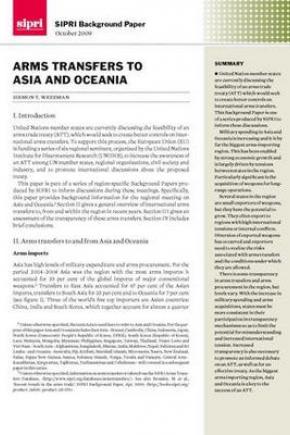Arms Transfers to Asia and Oceania
Military spending in Asia and Oceania is increasing and it is by far the biggest arms-importing region. This has been enabled by strong economic growth and is largely driven by tensions between states in the region. Particularly significant is the acquisition of weapons for long-range operations.
Several states in the region are small exporters of weapons, but they have the potential to grow. They often export to regions with high international tensions or internal conflicts. Diversion of exported weapons has occurred and exporters need to realize the risks associated with arms transfers and the conditions under which they are allowed.
There is some transparency in arms transfers and arms procurement in the region, but levels vary. With the increase in military spending and arms acquisitions, states must be more consistent in their participation in transparency mechanisms so as to limit the potential for misunderstanding and increased international tension. Increased transparency is also necessary to promote an informed debate on an ATT, as well as for an effective treaty. As the biggest arms importing region, Asia and Oceania is a key to the success of an ATT.
I. Introduction
II. Arms transfers to and from Asia and Oceania
III. Transparency
IV. Conclusions

